SCHOOL ACADEMICS
The Importance of Preschool Academics
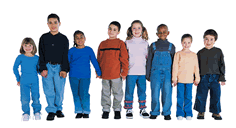
This lens highlights some great resources, tips, and products to prepare your preschooler for learning. Spend time interacting, reading, and engaging in activities with them. You are your child's best teacher. A preschooler would rather spend time with you than anyone else. A parent is usually a child's first resource for learning vocabulary and for learning how things work in general. There is no better investment of your time than your child's education. With the help of our materials you will be able sharpen your preschooler's mind(s) by teaching them to use organized analysis rather than guessing to solve problems.
Parents: A Child's First & Best Resource for Learning
Early Child Cognitive Development
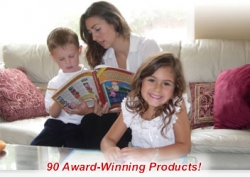
Possibly the most striking development in early childhood, especially from a parent's point of view, is the development of speech and language capabilities. The first time your child says "Mama" or "Dada" will undoubtedly be, or undoubtedly was, a seminal moment in your life. It is generally accepted that when a child first starts developing language skills, the child is ready to begin a rudimentary education. Indeed, the child's education begins whether the parent assists or not.
The Critical Thinking Co. produces a whole line of products for pre-K children that can help parents expand their children's vocabularies, reading skills, and even their math skills. While children should not be expected to pick up Dickens or multiplication tables so early on, young children are perfectly capable of learning basic addition and subtraction and reading simple children's books. At this stage, a parent's involvement is crucial.
A parent is usually a child's first resource for learning vocabulary and for learning how things work in general. This tremendous responsibility causes some new parents to fret and feel incapable of providing the proper foundations for later education. At The Critical Thinking Co., however, we have put enormous effort into developing products that are accessible to children, will develop the basis for higher order thinking, and are easy for parents to use.
Childhood should be fun, no doubt about it, and it should be carefree (for the children anyway) but it should also be looked at as the foundation upon which the rest of a child's life will be built. Preparing children for the challenges they will face in school and in life are the definite domain of parents. The Critical Thinking Co. can help you make certain your child is prepared to learn, to make decisions, and to succeed
The Critical Thinking Co. produces a whole line of products for pre-K children that can help parents expand their children's vocabularies, reading skills, and even their math skills. While children should not be expected to pick up Dickens or multiplication tables so early on, young children are perfectly capable of learning basic addition and subtraction and reading simple children's books. At this stage, a parent's involvement is crucial.
A parent is usually a child's first resource for learning vocabulary and for learning how things work in general. This tremendous responsibility causes some new parents to fret and feel incapable of providing the proper foundations for later education. At The Critical Thinking Co., however, we have put enormous effort into developing products that are accessible to children, will develop the basis for higher order thinking, and are easy for parents to use.
Childhood should be fun, no doubt about it, and it should be carefree (for the children anyway) but it should also be looked at as the foundation upon which the rest of a child's life will be built. Preparing children for the challenges they will face in school and in life are the definite domain of parents. The Critical Thinking Co. can help you make certain your child is prepared to learn, to make decisions, and to succeed
Build Confidence And A Love of Learning
Early Childhood Curriculum
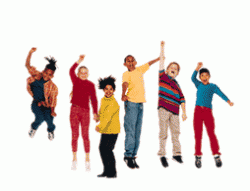
Early childhood is a time of wonder, openness, insatiable curiosity, and immense parental influence. The best way to help ensure your child's success later in life (from elementary school through adolescence and on) is to lay the groundwork for the education that will help them achieve their goals--whenever they figure out what those goals are. Early childhood curriculum should not be too demanding, of course, but it should present learning challenges.
The Critical Thinking Co. has developed a number of products parents can use to teach thinking skills and to build a child's confidence and exuberance for learning. During this period in a child's life, his or her cognitive abilities will expand faster and more profoundly that at any other time. By exposing your child to basic language skills and the rudiments of math, reading, writing, reasoning, art, and science, he or she can start school ahead of the curve.
Remembering that childhood should be fun, however, The Critical Thinking Co. developed our early childhood products with fun in mind. Through the use of rhyming riddles, colorful graphics, and accessible language, our products are as enticing to children and as fun for them as they are good for them. Our products were also designed with the schedules of busy parents in mind. They are easy to use and do not require hours of drills or tests.
The Critical Thinking Co. approach to early childhood education is based not on the accrual of facts and rules but rather on building good thinking skills. Our products introduce young children to logic, reason, and critical thinking in ways that they can understand. As the children then grow, they have the basic tools they will need to understand everything that comes after.
The Critical Thinking Co. has developed a number of products parents can use to teach thinking skills and to build a child's confidence and exuberance for learning. During this period in a child's life, his or her cognitive abilities will expand faster and more profoundly that at any other time. By exposing your child to basic language skills and the rudiments of math, reading, writing, reasoning, art, and science, he or she can start school ahead of the curve.
Remembering that childhood should be fun, however, The Critical Thinking Co. developed our early childhood products with fun in mind. Through the use of rhyming riddles, colorful graphics, and accessible language, our products are as enticing to children and as fun for them as they are good for them. Our products were also designed with the schedules of busy parents in mind. They are easy to use and do not require hours of drills or tests.
The Critical Thinking Co. approach to early childhood education is based not on the accrual of facts and rules but rather on building good thinking skills. Our products introduce young children to logic, reason, and critical thinking in ways that they can understand. As the children then grow, they have the basic tools they will need to understand everything that comes after.
Teach the Basics Even Before Preschool
Early Childhood Education
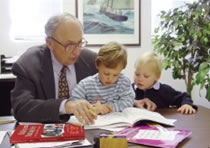
Through the tireless efforts of countless educators, parents, psychologists, and other concerned professionals, early childhood development has changed fundamentally. There was a time when children under five years of age were considered to be incapable of rational thought or of beginning their educations. Now, however, it is widely accepted that young children are fully capable of learning the basics before kindergarten.
Children that are exposed to basic arithmetic, language, and writing skills can enter into kindergarten with skill sets equal to those of many second graders. Small children are like sponges and they can soak up lessons that often astonish their parents. This early educational foundation can foster a joy of learning and, in later years, can put them far ahead of state and federal standards.
When some people think of early childhood education, they think of kids chained to desks and being robbed of their childhoods. At The Critical Thinking Co., however, nothing could be further from the truth. The Critical Thinking Co. early childhood products are designed specifically with fun in mind. From colorful pictures and rhyming riddles to interactive drawing and coloring lessons, our products introduce creative thinking and logic in ways children enjoy.
Whether to give your child a head start, to help your child catch up, or to provide a complete homeschool education, The Critical Thinking Co. provides educational content that is both fun and effective. Our products meet and exceed all federal standards and have been improving grades and test scores for 50 years.
Children that are exposed to basic arithmetic, language, and writing skills can enter into kindergarten with skill sets equal to those of many second graders. Small children are like sponges and they can soak up lessons that often astonish their parents. This early educational foundation can foster a joy of learning and, in later years, can put them far ahead of state and federal standards.
When some people think of early childhood education, they think of kids chained to desks and being robbed of their childhoods. At The Critical Thinking Co., however, nothing could be further from the truth. The Critical Thinking Co. early childhood products are designed specifically with fun in mind. From colorful pictures and rhyming riddles to interactive drawing and coloring lessons, our products introduce creative thinking and logic in ways children enjoy.
Whether to give your child a head start, to help your child catch up, or to provide a complete homeschool education, The Critical Thinking Co. provides educational content that is both fun and effective. Our products meet and exceed all federal standards and have been improving grades and test scores for 50 years.
Preschool Academics: Feeding The Developing Mind
Preschool Academics
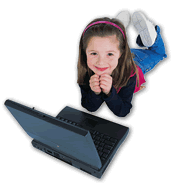
Today it is widely accepted that young children are fully capable of learning to read, add, subtract, and use organized analysis to solve problems. Although some critics of preschool academics believe that early childhood should be limited to play, it is generally accepted that preschool children are capable and benefit from academic development. Whether you're sending your child to an academic preschool, a traditional play-based school, or homeschooling, adding preschool academics to your preschool curriculum can have a significant impact on your child's academic experience.
We believe preschool age children should have fun. Drill and memorization does not work, but well designed preschool activities can be stimulating, engaging, and fun. Like older children, preschool children love to learn and exercise their minds when properly engaged. Preschool material must be colorful, easily understood, sequenced in small steps, game like, and solvable in a short period. In addition, we encourage discussion and one on one tutoring.
We also engineer critical thinking into our preschool material to help engage students and teach them organized analysis. Discussion and critical thinking questioning strategy lead to deeper analysis of content. This makes the learning process more about absorbing and reflecting on all facets of the material in a natural and curious state. Here are a few examples of questions that invoke informal reasoning: "Why did you select that one?" "How are these different?" "What happened when you?" "What would happen if you?" "What can you do to make this happen?" "How do you think s/he feels about what happened?" These types of questions develop critical thinking skills and stimulate verbal development as the children try to communicate their reasoning. It also provides them with the opportunity to reason during the course of a discussion, an essential early cognitive development skill.
By designing critical thinking into preschool activities, we build self-esteem, lay a foundation for formal education, and develop a life-long love of learning. The Critical Thinking Company's early childhood products are fun, engaging, and effective. The products introduce young children to logic, reason, and critical thinking in ways that they can understand.
We believe preschool age children should have fun. Drill and memorization does not work, but well designed preschool activities can be stimulating, engaging, and fun. Like older children, preschool children love to learn and exercise their minds when properly engaged. Preschool material must be colorful, easily understood, sequenced in small steps, game like, and solvable in a short period. In addition, we encourage discussion and one on one tutoring.
We also engineer critical thinking into our preschool material to help engage students and teach them organized analysis. Discussion and critical thinking questioning strategy lead to deeper analysis of content. This makes the learning process more about absorbing and reflecting on all facets of the material in a natural and curious state. Here are a few examples of questions that invoke informal reasoning: "Why did you select that one?" "How are these different?" "What happened when you?" "What would happen if you?" "What can you do to make this happen?" "How do you think s/he feels about what happened?" These types of questions develop critical thinking skills and stimulate verbal development as the children try to communicate their reasoning. It also provides them with the opportunity to reason during the course of a discussion, an essential early cognitive development skill.
By designing critical thinking into preschool activities, we build self-esteem, lay a foundation for formal education, and develop a life-long love of learning. The Critical Thinking Company's early childhood products are fun, engaging, and effective. The products introduce young children to logic, reason, and critical thinking in ways that they can understand.
Related Activities
Building Thinking Skills® Beginning
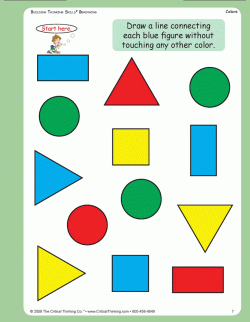
Reading, writing, and math readiness. Develops analysis skills for academic learning!
Building Thinking Skills® Beginning (©2008), provides fun, highly effective and engaging reasoning activities to improve the vocabulary, pre-reading, pre-writing, math, logic, spatial, and auditory processing skills of preschoolers. It teaches children to use organized analysis instead of guesswork to solve problems as it develops critical thinking skills necessary for success in reading, math, writing, and science.?The title may be used as a complete critical thinking curriculum to prepare young minds for preschool academics. The book uses colorful, easy-to-understand activities, sequenced in small steps, many gamelike, and solvable in a short period.
More Building Thinking Skills Activities
Building Thinking Skills® Beginning (©2008), provides fun, highly effective and engaging reasoning activities to improve the vocabulary, pre-reading, pre-writing, math, logic, spatial, and auditory processing skills of preschoolers. It teaches children to use organized analysis instead of guesswork to solve problems as it develops critical thinking skills necessary for success in reading, math, writing, and science.?The title may be used as a complete critical thinking curriculum to prepare young minds for preschool academics. The book uses colorful, easy-to-understand activities, sequenced in small steps, many gamelike, and solvable in a short period.
More Building Thinking Skills Activities
Early Learning Should Be Fun!
Preschool Lesson Plans
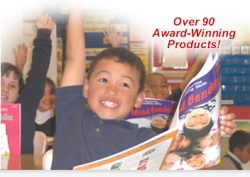
Once upon a time, preschool was considered to be either an excess of over-achieving parents or an alternative to daycare. In the past few decades, however, research into early childhood development has shown that children are prepared to start their educations much earlier than previously thought. As long as children are still given time to play and be children, an early start on education is nothing but beneficial.
Once a child starts speaking and developing a vocabulary, that child is ready to start learning the fundamentals. Early childhood curricula from The Critical Thinking Co. introduce preschool-age children to the rudiments of reading, writing, math, science, and social science. As a child's language skills develop, so too does the child's ability to start thinking logically, problem solving, and building the foundations of more complex skill sets.
If this sounds somewhat intense for the under-five crowd, keep in mind that all of this is achieved with riddles, puzzles, games, and activities that appeal to young children. There is no reason a small child cannot have a fun and carefree childhood while simultaneously developing the skills he or she will need for the rest of his or her life. With The Critical Thinking Co. products, your child can start kindergarten knowing how to read and write, and add and subtract.
Whether you are a parent planning to homeschool your child, a parent looking to give your child a head start, or an educator leading a small preschool class, The Critical Thinking Co. products can put you and your child on the right track. Helping students at all stages of development achieve success has been the impetus behind The Critical Thinking Co. for over 30 years.
Once a child starts speaking and developing a vocabulary, that child is ready to start learning the fundamentals. Early childhood curricula from The Critical Thinking Co. introduce preschool-age children to the rudiments of reading, writing, math, science, and social science. As a child's language skills develop, so too does the child's ability to start thinking logically, problem solving, and building the foundations of more complex skill sets.
If this sounds somewhat intense for the under-five crowd, keep in mind that all of this is achieved with riddles, puzzles, games, and activities that appeal to young children. There is no reason a small child cannot have a fun and carefree childhood while simultaneously developing the skills he or she will need for the rest of his or her life. With The Critical Thinking Co. products, your child can start kindergarten knowing how to read and write, and add and subtract.
Whether you are a parent planning to homeschool your child, a parent looking to give your child a head start, or an educator leading a small preschool class, The Critical Thinking Co. products can put you and your child on the right track. Helping students at all stages of development achieve success has been the impetus behind The Critical Thinking Co. for over 30 years.
Bundle of Fun!
PreK Book Bundle
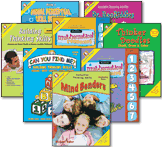
There isn't an easier or more effective way to bring critical thinking into your home! We've put together this easy-order book bundle so you don't have to.
This bundle offers our top-selling PreK products at a 20% discount, so you get more for less.
PreK Bundles
This bundle offers our top-selling PreK products at a 20% discount, so you get more for less.
PreK Bundles
| objectives_of_elementary_education_curriculum.doc |
~ English ~
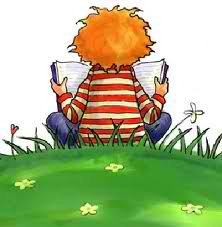
English subject and lessons for PREPARATORY
and its importance.
and its importance.
| english_discussion_for_prepararoty.pdf |
| kinds_of_adverbs.doc |
~ Filipino ~
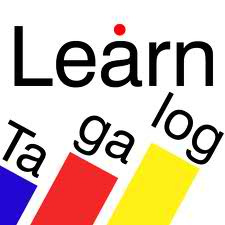
Ang Asignaturang Filipino (Filipino Subject)
Filipino Subject topics
(Mga Bahagi ng Pananalita)
Pangungusap (Sentence)
I. Introduksyon:
Ang Pangungusap ay lipon ng mga salita na nagsaad ng buong diwa.
Bawat pangungusap ay may dalawang bahagi -- ang Simuno at Panaguri
1. Ang Simuno (subject) ay ang paksa o ang pinag-usapan sa pangungusap. May mga panandang si, sina kung tao ang simuno at ang o ang mga kung bagay, lunan o pangayayari.
2. Ang Panaguri (predicate) naman ang nagsasabi tungkol sa simuno.
Halimbawa:
a. Ang pinaghugasan ng pinggan ay ipinandidilig ko ng halaman.
Simuno: pinaghugasan ng pinggan
Panaguri: ay ipinandidilig ko ng halaman
b. Ginagamit ko ang basurahan nang maayos.
Simuno: ang basurahan
Panaguri: ginagamit nang maayos
II. Ayos ng Pangungusap
May dalawang kaayosan ang pangungusap. Ito ay ang Karaniwang Ayos at ang Di-karaniwang Ayos.
Ang Karaniwang Ayos ng pangungusap ay nauuna ang panaguri kaysa sa simuno/paksa.
Hal.
Nandito ako.
(panaguri) (simuno)
Ang Di-karaniwang Ayos ng pangungusap ay kung nauuna ang paksa at ginagamitan ng panandang "ay".
Hal.
Ako ay isang matalinong bata.
(simuno) (panaguri)
III. Mga Uri ng Pangungusap
May apat na uri ang pangungusap ayon sa gamit:
1. Paturol o Pasalaysay - ang pangungusap kung naglalahad ito ng isang katotohanang bagay. Nagtatapos ito sa tuldok (.).
Hal.
Nakalimutan mo ang iyong aklat sa bahay.
2. Pautos - ang pangungusap kung nag-uutos at nagtatapos din ito sa tuldok (.).
Hal.
Pakikuha po ng sapatos ko sa may mesa.
3. Patanong - ang pangungusap kung nagtatanong. Nagtatapos ito sa tandang pananong (?).
Hal.
Sino ako?
4. Padamdam - ang pangungusap kung nagsasaad ng matinding damdamin. Nagtatapos ito sa tandang padamdam (!).
Hal.
Aba, may sunog!
IV. Payak at Tambalang Pangungusap
1. Payak na pangungusap - kung ang isang ideya lamang ang ipinahahayag. May simuno at panaguri ito na maaring higit sa isa.
Hal.
Masarap at masustansya ang mga gulay.
2. Tambalang pangungusap - kung dalawang diwa o ideya ang ipinahahayag na maaring magkatulad, magkasalungat o pagpipilian. Dalawang payak na pangungusap ang pinagsama at pinag-uugnay ng at, o ngunit,
Hal.
Naglalaba si Juan habang nagluluto ang kanyang asawa.
V. Layon ng Pangungusap
Tatlo ang layon na maaring gamitin sa pangungusap.
1. Ang tuwirang layon ay tumatanggap ng kilos pandiwa at may panandang ng. Sumasagot ito sa tanong na ano.
Hal.
Sumayaw siya ng Tango.
2. Ang di-tuwirang layon ng pandiwa ay pinaglalaanan o pinagtutunguhan ng kilos. Sumasagot ito sa tanong ng kanino.
Hal.
Binigyan ko siya ng bulaklak.
3. Ang layon ng pang-ukol na sa ay tumutukoy sa lugar kung saan naganap ang kilos.
Hal.
Pumunta kami sa palengke.
Filipino Subject topics
(Mga Bahagi ng Pananalita)
Pangungusap (Sentence)
I. Introduksyon:
Ang Pangungusap ay lipon ng mga salita na nagsaad ng buong diwa.
Bawat pangungusap ay may dalawang bahagi -- ang Simuno at Panaguri
1. Ang Simuno (subject) ay ang paksa o ang pinag-usapan sa pangungusap. May mga panandang si, sina kung tao ang simuno at ang o ang mga kung bagay, lunan o pangayayari.
2. Ang Panaguri (predicate) naman ang nagsasabi tungkol sa simuno.
Halimbawa:
a. Ang pinaghugasan ng pinggan ay ipinandidilig ko ng halaman.
Simuno: pinaghugasan ng pinggan
Panaguri: ay ipinandidilig ko ng halaman
b. Ginagamit ko ang basurahan nang maayos.
Simuno: ang basurahan
Panaguri: ginagamit nang maayos
II. Ayos ng Pangungusap
May dalawang kaayosan ang pangungusap. Ito ay ang Karaniwang Ayos at ang Di-karaniwang Ayos.
Ang Karaniwang Ayos ng pangungusap ay nauuna ang panaguri kaysa sa simuno/paksa.
Hal.
Nandito ako.
(panaguri) (simuno)
Ang Di-karaniwang Ayos ng pangungusap ay kung nauuna ang paksa at ginagamitan ng panandang "ay".
Hal.
Ako ay isang matalinong bata.
(simuno) (panaguri)
III. Mga Uri ng Pangungusap
May apat na uri ang pangungusap ayon sa gamit:
1. Paturol o Pasalaysay - ang pangungusap kung naglalahad ito ng isang katotohanang bagay. Nagtatapos ito sa tuldok (.).
Hal.
Nakalimutan mo ang iyong aklat sa bahay.
2. Pautos - ang pangungusap kung nag-uutos at nagtatapos din ito sa tuldok (.).
Hal.
Pakikuha po ng sapatos ko sa may mesa.
3. Patanong - ang pangungusap kung nagtatanong. Nagtatapos ito sa tandang pananong (?).
Hal.
Sino ako?
4. Padamdam - ang pangungusap kung nagsasaad ng matinding damdamin. Nagtatapos ito sa tandang padamdam (!).
Hal.
Aba, may sunog!
IV. Payak at Tambalang Pangungusap
1. Payak na pangungusap - kung ang isang ideya lamang ang ipinahahayag. May simuno at panaguri ito na maaring higit sa isa.
Hal.
Masarap at masustansya ang mga gulay.
2. Tambalang pangungusap - kung dalawang diwa o ideya ang ipinahahayag na maaring magkatulad, magkasalungat o pagpipilian. Dalawang payak na pangungusap ang pinagsama at pinag-uugnay ng at, o ngunit,
Hal.
Naglalaba si Juan habang nagluluto ang kanyang asawa.
V. Layon ng Pangungusap
Tatlo ang layon na maaring gamitin sa pangungusap.
1. Ang tuwirang layon ay tumatanggap ng kilos pandiwa at may panandang ng. Sumasagot ito sa tanong na ano.
Hal.
Sumayaw siya ng Tango.
2. Ang di-tuwirang layon ng pandiwa ay pinaglalaanan o pinagtutunguhan ng kilos. Sumasagot ito sa tanong ng kanino.
Hal.
Binigyan ko siya ng bulaklak.
3. Ang layon ng pang-ukol na sa ay tumutukoy sa lugar kung saan naganap ang kilos.
Hal.
Pumunta kami sa palengke.
| pangngalan_noun.doc |
| panghalip_pronoun.doc |
| pang-abay_adverb.doc |
| pandiwa_verb.doc |
| pang-uri_adjective.doc |
~ Math ~
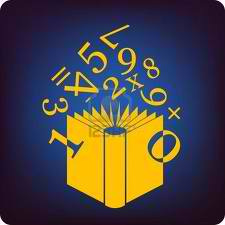
GET READY!
for KINDERGARTEN...
There are tons of things that you can be doing at home to get your little ones ready for kindergarten! In fact, we recommend that you continue doing these things throughout kindergarten and first grade.
All activities can include math! The trick is to make it all seem like a game. There are too many to put on one page, so we've got them categorized:
1. GETTING DRESS
Count buttons, snaps, socks, shoes, sleeves, pant legs, etc.
"What should we put on first?"
"What should we put on next?" (or second)
(The concept of first, second, third and so on are important!)
"How many of these things occur in pairs?"
"What's Mommy wearing that comes in pairs?" (earrings!)
"What is there the most of?"
"How many buttons does Daddy have on his shirt?"
"Who has more buttons? You or Daddy?"
"Let's put on your right shoe... Now, we'll put on your left shoe."
(This is a great time to teach right and left!)
"Whose shoes are smaller (or bigger)? Yours or Daddy's?"
(Comparing sizes is important!)
2. SNACK TIME
Use crackers of all kinds and have the child sort them before eating.
Again, using all different kinds of crackers, have child name the shapes (Wheat Thins are square, Waverly Wafers are rectangles, Ritz crackers are circles (round), Oystrets are hexagons, etc.)
Break graham crackers into different shaped rectangles...
"How many different kinds of squares and rectangles can you make?"
Spread a layer of peanut butter on a cracker and, then, draw a number in the peanut butter. (You can cover a pencil with plastic wrap to do your writing. Or use a toothpick.) The child gets to read the number before eating the cracker. Then you can number them 1, 2, 3, 4, and so on... Have the child put them in order to eat them. (Be sure to have the child watch you draw the numbers! Your example is the best thing for their learning to write. You can do letters too.) Putting the child's age on the cracker is fun!
Ask, "How old are you?" Then draw that number for them.
Ask, "How old were you last year?" Draw that number.
Then, "How old will you be next year?" And so on.
Sort M&M's, Skittles or Fruit Loops into containers (egg carton or muffin tin) by color. Count each color before eating.
"What color has the most?"
"What color has the least?"
3. FRUIT & VEGGIES
Apples:
Cut the apple crosswise to find the star... Count the points and count the seeds. Continue cutting the apple crosswise into slices and cut the star out with an apple corer -- it's a circle. Then eat the apple donuts! Compare the sizes of the slices first. They can be arranged from smallest to largest!
Oranges:
Peel and separate the slices. Count before eating.
Slice the orange crosswise and count the triangles.
Bananas:
Slice into circles and count them before eating. Be sure to notice the shape! You can use toothpicks to make banana lollipops! Find the biggest circles. Find the smallest circles.
Count how many bananas are in the bunch... Take one off to eat. "How many are left?"
Discuss subtracting 1 from 5 (or however many were in the bunch.)
Carrots:
Count how many are in the bunch. Take one off to eat.
"How many are left?"
Group carrots into groups of 2's or 3's before cooking or eating.
Celery:
Spread peanut butter in the trough of one of the smaller stalks. Let the child lay a row of raisins on the peanut butter - counting while they go... Bugs on a log! (Tastes pretty good too!)
4. EASY "COOKING"
Make Rice Krispy Treats:
The child can help measure the cereal and marshmallows in cups after finding the number in the recipe on the box. After preparation, the child can help help put the mix into a square, rectangular or round (circle) pan. Let the child help decide how many servings to make...
"Should we make 3 or 4 cuts this way?"
"How many the other way?"
"How many squares (or rectangles) did we cut?"
They can be counted as they are put onto a serving plate too.
Make Jello:
Again, find the numbers in the recipe on the box and have the child help with the measuring. Count the cups of water going in while the child stirs. Decide the shape of the dish to use. If you put less water in, you can cut the jello into squares or other shapes (try triangles!) You can also cut the jello with hollow cookie cutters.
Sandwiches:
Teach shapes by cutting a sandwich into different shapes - squares, rectangles or triangles. You can use a hollow cookie cutter to make a circle sandwich. Let the child choose and name the shapes.
Number Pancakes:
They're pretty easy to make - for a grown-up, anyway. Pour out a number on the skillet - it will have to be backwards! Let it cook a bit until it has browned a little. Then pour a regular pancake over the number. When you flip it, you'll see a number in the pancake! Making letters, hearts and faces is fun too!
5. DINNER TIME
Count table settings (plates, bowls, glasses, utensils, etc.), napkins, names the shapes of the items and the table (the plate is a circle).
Have the child help set the table - He/she will need to count the family members and the settings while doing so.
6. EARLY COUNTING
(Start early - just by example, at first.)
Toys- nested cups, keys, balls, blocks, stuffed animals... Everything can be sorted or counted.
Sorting shapes in containers (see the materials list).
Foods while shopping - count produce as you put it in the bag.
"How many bags of groceries did we buy?"
Have child help put groceries away.
"Can you arrange the can with the tallest ones in the back and the shortest ones in the front?"
You can do the same with the cereal and cracker boxes.
Count the magnets on the refrigerator. -- In fact, you can use refrigerator magnets on a cookie sheet for sorting and counting.
Coins (this is a bit more advanced)- Sort by size, stack in groups of 5's or 10's.
Pictures in photo albums.
"How many pictures are on this page?"
Chairs around the dinner table
Members in the family - How many girls? How many boys?
Count wheels, doors and other parts on the car.
"How many of these occur in pairs?"
"How many things are there 4 of?"
Help sort and count the daily mail. Find and read the numbers in the addresses.
Have them learn their address and phone number!!
Count things in family collections - like Beanie Babies.
Count claps, hops, jumps, etc.
Count steps while walking and climbing.
Get a birdfeeder and put it in the backyard.
"How many birds do you see on the feeder?"
"Let's keep track of how many bags of seed the birds eat this week."
7. READING & COUNTING
"How many books should we read?"
Ask the child to bring you a specific number of books to read.
Count things on the pages.
Keep track of the page numbers.
"What page number are we on?"
Count letters in names! This is great to help teach them to spell their own name.
"How many letters did you write?"
"Did you leave a letter out?"
Going to the local library is great fun! Tell them how many books they get to pick and have them count as they make their selections. Tell the check out person that you are learning to count and have her count them as she scans them.
8. ESTIMATING
Estimating is a very important skill and can be done during many of the other activities we've discussed...
"How many crackers do you think Mommy gave you?"
"15?"
"Ok, let's count them and see how close you were."
After measuring the child, have them guess how tall you are. Then measure and check.
"How many M&M's do you think are in this bag?"
Always discuss how close the child's estimate is to the actual amount. It's good for you to make an estimate too and explain to them how you made your guess. This will help them to learn the art of estimating.
9. PATTERNS
(Patterns are really important in math.)
Make a Fruit Loop necklace! Get some yarn and thread the Fruit Loops. Have the child help measure the string with a ruler. Show them the inches and count from 1 inch to about 30 inches. To make the stringing easier, wrap some tape around one end of the yard for easy threading. Count each one as it gets put on. The fun part is making a pattern! Put on 2 oranges, then 1 green, then 2 oranges, then 1 green. Have the child create their own patterns. You can create patterns and have them try to copy them.
Clapping in rhythm and patterns - Clap 3 times, then pats your legs. Do it again! You can do lots of things with this. Clap 3 times, then pause a beat, then clap 2 times. Do it again. Count while you clap. Later, the child can count while clapping.
Simon Says is a great game to play too! It's kind of like patterning.
10. WHILE DRIVING
There are lots of fun math things you can do while on the road.
"How many shapes of street signs can you find?" (Stop signs are octagons, yield signs are diamonds, etc.)
"Can you find shapes in other signs?"
(There is a ton of geometry in store and gas station signs. For example, Target stores have the big bull's eye that is made of circles.)
"Let's go on a Number Hunt! Tell me when you see some numbers."
"I need to know what the speed limit on this street is. Can you find the speed limit sign for me?"
"Let's see who can find 10 red cars first!"
Play the license plate game with numbers or letters:
Have them look for a 1 on a license plate. Then have them find a 2, then a 3 and so on.
It's great for letters too! Find the A first, then a B and so on.
Several kids can compete... Once a letter or number on a plate is "called" by one child, the others cannot use that plate and will have to wait for another chance. Whoever gets to 9 (or to Z) first, wins!
11. MISCELLANEOUS IMPORTANT STUFF
Finding Numbers:
Have a Number Hunt!
"How many places in the house can you find numbers?"
On clocks, calendars, the phone, remote controls, timers, rulers, etc.
Telling Time:
"What time is your favorite program?"
"It's in 15 minutes!"
"How far will this (clock) hand have to move before your show starts?"
Calendars:
How many days in a week? How many months? Notice odd and even days. How many days until a special event?
Measure:
Keep track of height and weight and explain to the child how you are doing it. Then have the child work out how she is, etc.
Always be sure to show kids how you are using the ruler when you are doing projects.
Have a Reward Chart:
"How many happy faces did you get today?"
Hey! You can print out Smiley Dude's for this!
Sorting:
Use egg cartons or muffin tins to sort things like buttons, beads, etc. (see snack time) Remove some and count what's left.
12. GOOD FAMILY GAMES
UNO - Have them deal too!
Go Fish - Teaches counting, sorting and grouping.
Crazy Eights - Like UNO, but you can do it with a regular deck of cards.
Dominoes
Bingo
Yahtzee
for KINDERGARTEN...
There are tons of things that you can be doing at home to get your little ones ready for kindergarten! In fact, we recommend that you continue doing these things throughout kindergarten and first grade.
All activities can include math! The trick is to make it all seem like a game. There are too many to put on one page, so we've got them categorized:
1. GETTING DRESS
Count buttons, snaps, socks, shoes, sleeves, pant legs, etc.
"What should we put on first?"
"What should we put on next?" (or second)
(The concept of first, second, third and so on are important!)
"How many of these things occur in pairs?"
"What's Mommy wearing that comes in pairs?" (earrings!)
"What is there the most of?"
"How many buttons does Daddy have on his shirt?"
"Who has more buttons? You or Daddy?"
"Let's put on your right shoe... Now, we'll put on your left shoe."
(This is a great time to teach right and left!)
"Whose shoes are smaller (or bigger)? Yours or Daddy's?"
(Comparing sizes is important!)
2. SNACK TIME
Use crackers of all kinds and have the child sort them before eating.
Again, using all different kinds of crackers, have child name the shapes (Wheat Thins are square, Waverly Wafers are rectangles, Ritz crackers are circles (round), Oystrets are hexagons, etc.)
Break graham crackers into different shaped rectangles...
"How many different kinds of squares and rectangles can you make?"
Spread a layer of peanut butter on a cracker and, then, draw a number in the peanut butter. (You can cover a pencil with plastic wrap to do your writing. Or use a toothpick.) The child gets to read the number before eating the cracker. Then you can number them 1, 2, 3, 4, and so on... Have the child put them in order to eat them. (Be sure to have the child watch you draw the numbers! Your example is the best thing for their learning to write. You can do letters too.) Putting the child's age on the cracker is fun!
Ask, "How old are you?" Then draw that number for them.
Ask, "How old were you last year?" Draw that number.
Then, "How old will you be next year?" And so on.
Sort M&M's, Skittles or Fruit Loops into containers (egg carton or muffin tin) by color. Count each color before eating.
"What color has the most?"
"What color has the least?"
3. FRUIT & VEGGIES
Apples:
Cut the apple crosswise to find the star... Count the points and count the seeds. Continue cutting the apple crosswise into slices and cut the star out with an apple corer -- it's a circle. Then eat the apple donuts! Compare the sizes of the slices first. They can be arranged from smallest to largest!
Oranges:
Peel and separate the slices. Count before eating.
Slice the orange crosswise and count the triangles.
Bananas:
Slice into circles and count them before eating. Be sure to notice the shape! You can use toothpicks to make banana lollipops! Find the biggest circles. Find the smallest circles.
Count how many bananas are in the bunch... Take one off to eat. "How many are left?"
Discuss subtracting 1 from 5 (or however many were in the bunch.)
Carrots:
Count how many are in the bunch. Take one off to eat.
"How many are left?"
Group carrots into groups of 2's or 3's before cooking or eating.
Celery:
Spread peanut butter in the trough of one of the smaller stalks. Let the child lay a row of raisins on the peanut butter - counting while they go... Bugs on a log! (Tastes pretty good too!)
4. EASY "COOKING"
Make Rice Krispy Treats:
The child can help measure the cereal and marshmallows in cups after finding the number in the recipe on the box. After preparation, the child can help help put the mix into a square, rectangular or round (circle) pan. Let the child help decide how many servings to make...
"Should we make 3 or 4 cuts this way?"
"How many the other way?"
"How many squares (or rectangles) did we cut?"
They can be counted as they are put onto a serving plate too.
Make Jello:
Again, find the numbers in the recipe on the box and have the child help with the measuring. Count the cups of water going in while the child stirs. Decide the shape of the dish to use. If you put less water in, you can cut the jello into squares or other shapes (try triangles!) You can also cut the jello with hollow cookie cutters.
Sandwiches:
Teach shapes by cutting a sandwich into different shapes - squares, rectangles or triangles. You can use a hollow cookie cutter to make a circle sandwich. Let the child choose and name the shapes.
Number Pancakes:
They're pretty easy to make - for a grown-up, anyway. Pour out a number on the skillet - it will have to be backwards! Let it cook a bit until it has browned a little. Then pour a regular pancake over the number. When you flip it, you'll see a number in the pancake! Making letters, hearts and faces is fun too!
5. DINNER TIME
Count table settings (plates, bowls, glasses, utensils, etc.), napkins, names the shapes of the items and the table (the plate is a circle).
Have the child help set the table - He/she will need to count the family members and the settings while doing so.
6. EARLY COUNTING
(Start early - just by example, at first.)
Toys- nested cups, keys, balls, blocks, stuffed animals... Everything can be sorted or counted.
Sorting shapes in containers (see the materials list).
Foods while shopping - count produce as you put it in the bag.
"How many bags of groceries did we buy?"
Have child help put groceries away.
"Can you arrange the can with the tallest ones in the back and the shortest ones in the front?"
You can do the same with the cereal and cracker boxes.
Count the magnets on the refrigerator. -- In fact, you can use refrigerator magnets on a cookie sheet for sorting and counting.
Coins (this is a bit more advanced)- Sort by size, stack in groups of 5's or 10's.
Pictures in photo albums.
"How many pictures are on this page?"
Chairs around the dinner table
Members in the family - How many girls? How many boys?
Count wheels, doors and other parts on the car.
"How many of these occur in pairs?"
"How many things are there 4 of?"
Help sort and count the daily mail. Find and read the numbers in the addresses.
Have them learn their address and phone number!!
Count things in family collections - like Beanie Babies.
Count claps, hops, jumps, etc.
Count steps while walking and climbing.
Get a birdfeeder and put it in the backyard.
"How many birds do you see on the feeder?"
"Let's keep track of how many bags of seed the birds eat this week."
7. READING & COUNTING
"How many books should we read?"
Ask the child to bring you a specific number of books to read.
Count things on the pages.
Keep track of the page numbers.
"What page number are we on?"
Count letters in names! This is great to help teach them to spell their own name.
"How many letters did you write?"
"Did you leave a letter out?"
Going to the local library is great fun! Tell them how many books they get to pick and have them count as they make their selections. Tell the check out person that you are learning to count and have her count them as she scans them.
8. ESTIMATING
Estimating is a very important skill and can be done during many of the other activities we've discussed...
"How many crackers do you think Mommy gave you?"
"15?"
"Ok, let's count them and see how close you were."
After measuring the child, have them guess how tall you are. Then measure and check.
"How many M&M's do you think are in this bag?"
Always discuss how close the child's estimate is to the actual amount. It's good for you to make an estimate too and explain to them how you made your guess. This will help them to learn the art of estimating.
9. PATTERNS
(Patterns are really important in math.)
Make a Fruit Loop necklace! Get some yarn and thread the Fruit Loops. Have the child help measure the string with a ruler. Show them the inches and count from 1 inch to about 30 inches. To make the stringing easier, wrap some tape around one end of the yard for easy threading. Count each one as it gets put on. The fun part is making a pattern! Put on 2 oranges, then 1 green, then 2 oranges, then 1 green. Have the child create their own patterns. You can create patterns and have them try to copy them.
Clapping in rhythm and patterns - Clap 3 times, then pats your legs. Do it again! You can do lots of things with this. Clap 3 times, then pause a beat, then clap 2 times. Do it again. Count while you clap. Later, the child can count while clapping.
Simon Says is a great game to play too! It's kind of like patterning.
10. WHILE DRIVING
There are lots of fun math things you can do while on the road.
"How many shapes of street signs can you find?" (Stop signs are octagons, yield signs are diamonds, etc.)
"Can you find shapes in other signs?"
(There is a ton of geometry in store and gas station signs. For example, Target stores have the big bull's eye that is made of circles.)
"Let's go on a Number Hunt! Tell me when you see some numbers."
"I need to know what the speed limit on this street is. Can you find the speed limit sign for me?"
"Let's see who can find 10 red cars first!"
Play the license plate game with numbers or letters:
Have them look for a 1 on a license plate. Then have them find a 2, then a 3 and so on.
It's great for letters too! Find the A first, then a B and so on.
Several kids can compete... Once a letter or number on a plate is "called" by one child, the others cannot use that plate and will have to wait for another chance. Whoever gets to 9 (or to Z) first, wins!
11. MISCELLANEOUS IMPORTANT STUFF
Finding Numbers:
Have a Number Hunt!
"How many places in the house can you find numbers?"
On clocks, calendars, the phone, remote controls, timers, rulers, etc.
Telling Time:
"What time is your favorite program?"
"It's in 15 minutes!"
"How far will this (clock) hand have to move before your show starts?"
Calendars:
How many days in a week? How many months? Notice odd and even days. How many days until a special event?
Measure:
Keep track of height and weight and explain to the child how you are doing it. Then have the child work out how she is, etc.
Always be sure to show kids how you are using the ruler when you are doing projects.
Have a Reward Chart:
"How many happy faces did you get today?"
Hey! You can print out Smiley Dude's for this!
Sorting:
Use egg cartons or muffin tins to sort things like buttons, beads, etc. (see snack time) Remove some and count what's left.
12. GOOD FAMILY GAMES
UNO - Have them deal too!
Go Fish - Teaches counting, sorting and grouping.
Crazy Eights - Like UNO, but you can do it with a regular deck of cards.
Dominoes
Bingo
Yahtzee
~ Science Discovery~
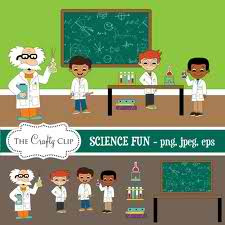
a hands-on discovery science curriculum for Preschool and Kindergarten
www.teachpreschoolscience.com
(CHECK OUT: SCIENCE DISCOVERY)
www.teachpreschoolscience.com
(CHECK OUT: SCIENCE DISCOVERY)
This curriculum can be used as the basis for an early childhood program, or it can be incorporated into an existing one.
It can be used by preschool teachers; home daycare providers; homeschooling parents.
It is developmentally appropriate for children aged 3 years old to Kindergarten and beyond. It is based on sound educational practice and theory. It has been extensively researched.
It can be used by preschool teachers; home daycare providers; homeschooling parents.
It is developmentally appropriate for children aged 3 years old to Kindergarten and beyond. It is based on sound educational practice and theory. It has been extensively researched.
PHYSICAL SCIENCE
Blowing Bubbles
Magnify!
Ways to Measure Time
Magnetic Attraction
Ramps in Motion
Ice Melting
Sink or Float a Boat
Sponges and Water
Dropping Things Through the Air
Static Electricity
Battery Electricity
Properties of Soap and Water
Weights and Balances
How Can Heat Change Things?
Tools and Machines Help Us Do Things
Lifting With Levers
Wheels
Predicting How Simple Machines Will Work
Parts of a Computer
Discoveries With Straws
Different Ways of Making Light
Dropping Things
Blowing Bubbles
Magnify!
Ways to Measure Time
Magnetic Attraction
Ramps in Motion
Ice Melting
Sink or Float a Boat
Sponges and Water
Dropping Things Through the Air
Static Electricity
Battery Electricity
Properties of Soap and Water
Weights and Balances
How Can Heat Change Things?
Tools and Machines Help Us Do Things
Lifting With Levers
Wheels
Predicting How Simple Machines Will Work
Parts of a Computer
Discoveries With Straws
Different Ways of Making Light
Dropping Things
LIFE SCIENCE – PLANTS and ANIMALS
Comparing Leaves
Exploring Pumpkins
Shucking Corn
Earthworm Observation
Parent and Baby Animals
Collecting Ants
Spider Season
Visit to a Pet Store
Living and Non Living Things
Animals Come in Many Sizes, Shapes and Colors
Ways Animals Move
Animals Need to Eat
Difference Between Wild and Tame Animals
People Use Products from Animals and Plants
Animal Coverings- Hair, Fur, Feathers, Scales and Skin
Animals Live in Different Places
Metamorphosis and Change in Biology
Nocturnal Animals
Egg Science
Exploring Fish
Tree “Skin”- Bark
Growing Potatoes in Water
Making Daisy and Clover Chains
Digging in the Dirt
Comparing Leaves
Exploring Pumpkins
Shucking Corn
Earthworm Observation
Parent and Baby Animals
Collecting Ants
Spider Season
Visit to a Pet Store
Living and Non Living Things
Animals Come in Many Sizes, Shapes and Colors
Ways Animals Move
Animals Need to Eat
Difference Between Wild and Tame Animals
People Use Products from Animals and Plants
Animal Coverings- Hair, Fur, Feathers, Scales and Skin
Animals Live in Different Places
Metamorphosis and Change in Biology
Nocturnal Animals
Egg Science
Exploring Fish
Tree “Skin”- Bark
Growing Potatoes in Water
Making Daisy and Clover Chains
Digging in the Dirt
~ Philippine History ~
~ Computer Lessons ~
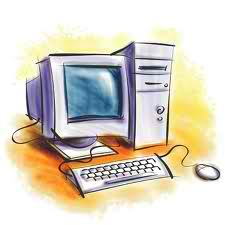
Software for Kids caters to children all ages and grades, from toddlers, preschool, kindergarten, K-5, to middle school. Software For Kids has educational software and academic games to help your child improve their typing, math and reading skills and their understanding of science. Softwareforkids.com is your preferred destination for software that are important to your kid's educational needs.
We know teachers and parents want to provide their children with the very best preparation for learning. So how do you give your child a head start?
These educational software for kids will show your child how to learn and have fun at the same time, which also provide your children a foundation for future years.
Our software programs are educational, involving, stimulating and always fun. Whether you buy them for your kids or grandkids, as the school supplies, a birthday or holiday present, or as an inexpensive treat, you won't regret of helping your kids become smarter in school.
The Educational Software for kids is specifically designed to help your child develop an interest for learning in an easy way.
This software titles will help your kids in their homework, and improve their grades.
We know teachers and parents want to provide their children with the very best preparation for learning. So how do you give your child a head start?
These educational software for kids will show your child how to learn and have fun at the same time, which also provide your children a foundation for future years.
Our software programs are educational, involving, stimulating and always fun. Whether you buy them for your kids or grandkids, as the school supplies, a birthday or holiday present, or as an inexpensive treat, you won't regret of helping your kids become smarter in school.
The Educational Software for kids is specifically designed to help your child develop an interest for learning in an easy way.
This software titles will help your kids in their homework, and improve their grades.
· Toddlers Computer Games
· Preschool Computer Games
· Kindergarten Educational Software
· 1st Grade Educational Software
· 2nd Grade Educational Software
· 3rd Grade Educational Software
· 4th Grade Educational Software
· 5th Grade Educational Software
· Middle School Educational Software
· Educational Software Just For Girls
· Kids Edu-Tainment Computer Software
· Educational Software for Schools
· Spelling Educational Software
· Reading Educational Software
· Math Educational Software
· Science Educational Software
www.softwareforkids.com
(HELPFUL SITE)
· Preschool Computer Games
· Kindergarten Educational Software
· 1st Grade Educational Software
· 2nd Grade Educational Software
· 3rd Grade Educational Software
· 4th Grade Educational Software
· 5th Grade Educational Software
· Middle School Educational Software
· Educational Software Just For Girls
· Kids Edu-Tainment Computer Software
· Educational Software for Schools
· Spelling Educational Software
· Reading Educational Software
· Math Educational Software
· Science Educational Software
www.softwareforkids.com
(HELPFUL SITE)
~ Bible Stories & Teachings ~
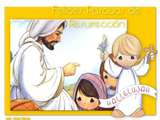
To all Children (Angels of God)...This site is especially made for you. We hope that these messages, stories, experiences, doctrine and moral lessons will guide you to life of faith and trust in God from whom all things come. To help you understand God's Love and Care for you. Hope that you will learn that each of you is God's own special child, you will come to love God more and more and become a faithful follower of Jesus.
To dear parents and guardians, a child is now stepping on a new ground - a very delicate one. This is the time when the children need attention as they faces a totally new environment. The schooling child is active, curious, highly inquisitive. filled with awe and wonder. He/she loves to move about, to explore but has a short span of attention and interest. Feels and imagines all things, seeks affection and applause and likes to be told how well he/she is doing. In religious way, the active child's faith is developed by imitating the words, examples and actions of adults. With wild imaginations and fantasy. This site, a child will discover the wonders of God's goodness in nature, persons, places, objects and events of his/her world. Every stories and teachings that a child can learn to all the walks of life, parents and their love one's will both make a wonderful journey together as your child grows up to be the person God wants him/her to become.
Happy reading and God bless us all!
To dear parents and guardians, a child is now stepping on a new ground - a very delicate one. This is the time when the children need attention as they faces a totally new environment. The schooling child is active, curious, highly inquisitive. filled with awe and wonder. He/she loves to move about, to explore but has a short span of attention and interest. Feels and imagines all things, seeks affection and applause and likes to be told how well he/she is doing. In religious way, the active child's faith is developed by imitating the words, examples and actions of adults. With wild imaginations and fantasy. This site, a child will discover the wonders of God's goodness in nature, persons, places, objects and events of his/her world. Every stories and teachings that a child can learn to all the walks of life, parents and their love one's will both make a wonderful journey together as your child grows up to be the person God wants him/her to become.
Happy reading and God bless us all!
| gods_creation.doc |
~ Vocabulary ~

PHOTOGRAPHIC DICTIONARY and ENCYCLOPEDIA
http://photographicdictionary.com
A visual dictionary suitable for children, learning English or just as a quick reference.
http://photographicdictionary.com
A visual dictionary suitable for children, learning English or just as a quick reference.
